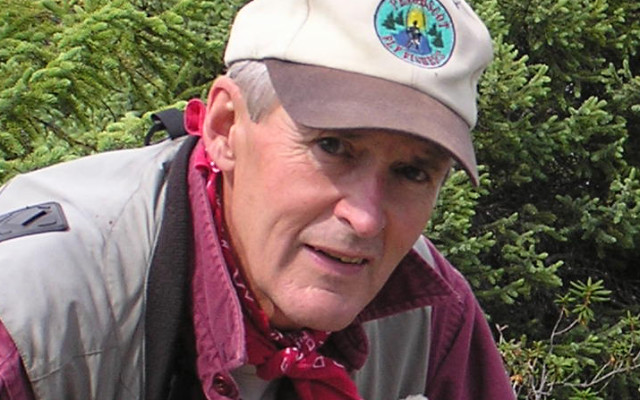
The waterway controversy boils down to using ‘free money’
By V. Paul Reynolds
This is not the first time that controversy has surrounded one of Maine’s most pristine and popular wilderness areas, the Allagash Wilderness Waterway. Back in the 1960s, the state beat back an attempt by the federal government to take over the waterway. In 1966, the Maine Legislature created a state-administered wilderness area. Today, the 92-mile waterway is the only state-administered component of the National Wild and Scenic River System.
Money, especially large amounts of it, has a way of imposing change. The Maine Bureau of Public Lands, which has a bundle of “free” money from the Feds, is planning to construct some new storage buildings, purchase a large boat with muscle outboards, and some new ADA-compliant (American Disabilities Act) stations on the edge of the Waterway.
An opposition group, Citizens for Keeping the Wild in Allagash, argue that all of this planned construction does not comply with the spirit of the mandate to keep the Waterway wild. The opposition group, led by former waterway superintendent Tim Caverly, is made up of another former superintendent, as well as a number of Maine guides and other friends of the waterway. The group is urging that the new storage units be built outside of the restricted zone, farther from the waterway.
Suzanne AuClair, a columnist for the Northwoods Sporting Journal and a lifelong resident and outdoorswoman from the Moosehead Lake area, also opposes the construction of new ADA-compliant stations on the edge of the waterway. She writes:
“Creating ADA-compliant stations unnecessarily opens up a whole can of worms to the future. Someone using a wheelchair will likely not be canoeing down the river. If the path to the way stations is rutted, the argument could be made later that, for safety’s sake, it should be paved, and signs erected to show the way. A wilderness area is not the same as a park. There are dozens of beautiful state parks throughout Maine that are ADA accessible. And interpretive exhibits ready to be visited. Even within Maine, there are now only two, maybe three, places that offer an increasingly rare form of solitude and traditional, remote North Woods experience: Baxter State Park, the Allagash Wilderness Waterway, and maybe, the St. John River.”
This is a difficult issue, one rooted in the age-old conflict between progress and the natural environment. And the most difficult and delicate of all, accessibility for the disabled. Where do we draw the line when ADA mandates clash with protecting a beloved wilderness area?
Although unspoken, the impetus of this whole dust up is, once again, “free money” from the Washington politicians. The funding for the waterway construction project, estimated at $1.2 million, comes from the federal American Rescue Plan Act (ARPA), which was released to states as part of a post Covid-19 economic aid package. An estimated $4.6 billion was received by the State of Maine for various uses. The funds must be obligated to a project by Dec. 31, 2024, and must be used by Dec. 31, 2025.
In other words, it’s the old use-it-or-lose-it game.
The author is editor of the Northwoods Sporting Journal. He is also a Maine Guide and host of a weekly radio program “Maine Outdoors” heard Sundays at 7 p.m. on The Voice of Maine News-Talk Network. He has authored three books. Online purchase information is available at www.sportingjournal.com.